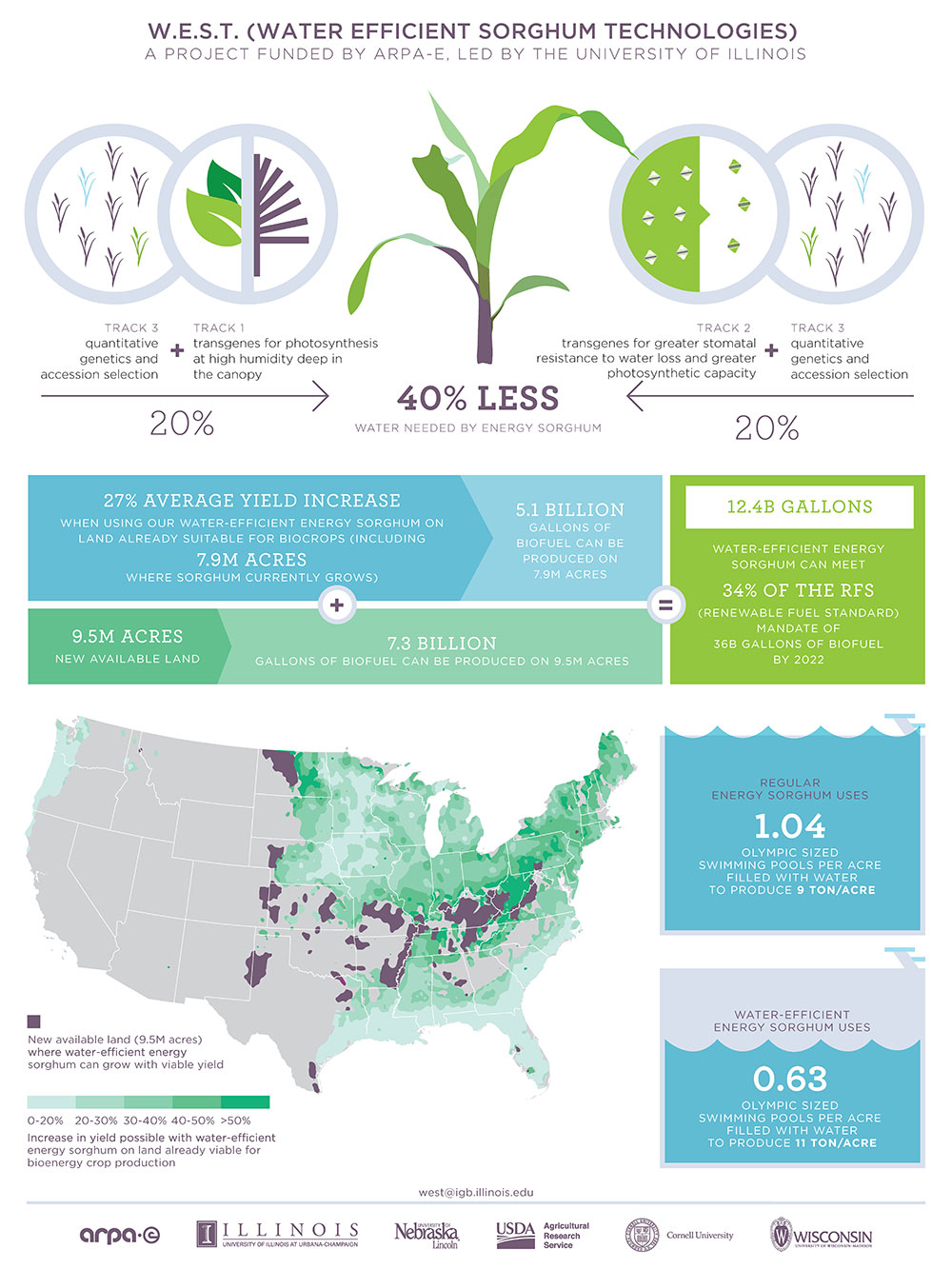PI: Andrew Leakey (UIUC)
Co-PIs: Carl Bernacchi, Patrick Brown, Stephen Long, Don Ort (UIUC), Edward Buckler, Michael Gore (Cornell University), Tom Clemente (University of Nebraska), Edgar Spalding (University of Wisconsin), John Burke (USDA-ARS)
Funding Source: Advanced Research Projects Agency - Energy
Website: https://west.illinois.edu/
![]() Project twitter feed: @arpaeWEST
Project twitter feed: @arpaeWEST
NOVEL TECHNOLOGIES TO SOLVE THE WATER USE PROBLEM OF HIGH YIELDING C4 BIOENERGY AND BIOPRODUCT FEEDSTOCKS
Crop water use vastly exceeds all other demands on water for bioenergy production. Water availability also significantly limits crop production. We propose to increase the efficiency of water use by 40% for sorghum, a key bioenergy and bioproducts crop. Applying our proposed technologies would greatly expand the rainfed acreage of the USA viable for bioenergy production, protect supply in wetter regions during years of below-average rainfall, and raise the current limit placed on yields by water availability.
Analysis with mathematical models of crop physiology and biophysics have identified two strategies to increase WUE. First, by shifting a greater fraction of photosynthetic activity in the crop canopy from upper to lower leaves that operate in higher humidity air. This can be done by allowing greater radiation penetration into the canopy with upper canopy leaves that are lighter green or in a more erect position. Second, by decreasing the number of stomatal pores on the leaves, thus increasing resistance to water loss from the leaf to the atmosphere. Developing these new biotechnologies is timely because it leverages new technologies to assess and analyze the relationship between crop genes and physiological performance in a way that has not previously been possible.
The end products will be patentable hybrid sorghum genotypes.
Our objectives are:
(1) produce and protect unique sorghum germplasm with superior water use efficiency to use in breeding improved commercial lines;
(2) develop and protect supporting technologies for developing water-use efficient germplasm, including physiological screening, modeling for guiding improvement, and transgenic materials.

